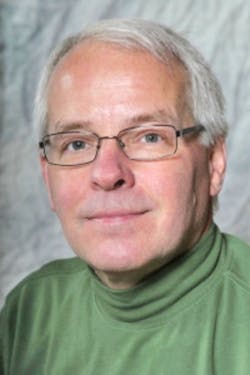Semiconductor design and equipment ecosystems seek alignment
This issue’s cover story reports on semiconductor equipment, with a focus on test. But the equipment would remain idle without input from the electronic-design-automation ecosystem. In recognition of the importance of the design environment and its role in implementing design-for-test functionality, this issue also includes the article “Nondestructive memory BIST for runtime automotive test,” by Stephen Pateras, product marketing director within the Silicon Test Solutions group of Mentor, a Siemens Business.
In further recognition of the importance of design, the Electronic System Design Alliance (ESD Alliance) and SEMI recently entered into a memorandum of understanding under which the ESD Alliance will become a SEMI Strategic Association Partner while continuing to pursue its mission of representing companies in the semiconductor design ecosystem. In a recent phone interview, SEMI vice president Bettina Weiss and ESD Alliance executive director Bob Smith elaborated on the move.
Weiss said SEMI is excited about the integration of the two organizations, with SEMI having worked with the ESD Alliance over the years, during which SEMI has identified an increasing synergy between the organizations. (The ESD Alliance emerged from the EDA Consortium, or EDAC, in 2016.) With the industry increasingly addressing artificial intelligence, automotive electronics, and end-user applications, Weiss said, “It’s a very natural fit to bring the design community into the supply chain.” She noted that although SEMI has worked closely with the design community, there is little overlap between SEMI and ESD Alliance membership, Mentor being one exception.
According to Smith, “Our board looked at this when discussing how to build out the ESD Alliance into becoming a global organization.” He noted that the alliance has members overseas but added that it is now difficult for an organization like the ESD Alliance to establish a presence in other geographies. SEMI expended that effort decades ago, a fact that the integration lets the ESD Alliance take advantage of. Smith likened the benefits to one plus one equaling three or four, adding that there is almost no overlap between SEMI and the alliance.
“It makes perfect sense for the two groups to work together, given SEMI’s broadened mission and our expertise in electronic design,” said Smith. “The ESD Alliance will be the focal point for the design ecosystem as it always has. The only difference is that the ESD Alliance will be operating as a strategic partner under the SEMI umbrella.” It’s clear that the integration is a win-win for both organizations, he added.
I suggested that the goals of SEMI and ESD Alliance members might differ. SEMI members might be inclined to push for a new generation of semiconductor equipment, related to EUV, for example, whereas EDA companies may promote technologies like computational lithography. Smith noted that it is interesting that multipatterning has extended the life of very expensive semiconductor equipment, but he said that anytime you have an engineering problem, smart people will come together to determine the best path forward. Weiss added that there will be different viewpoints leading to some tension, but the best solutions will be worked out collectively.
The initiative between SEMI and ESD Alliance follows other initiatives, such as the 2015 partnership between SEMI and FlexTech Alliance. Weiss pointed out that the goal is not a matter of growing SEMI but of helping the collective membership—including not just big companies but the long tail of SMEs—gain expertise and leverage synergies when participating in the evolving semiconductor supply chain.
About the Author

Rick Nelson
Contributing Editor
Rick is currently Contributing Technical Editor. He was Executive Editor for EE in 2011-2018. Previously he served on several publications, including EDN and Vision Systems Design, and has received awards for signed editorials from the American Society of Business Publication Editors. He began as a design engineer at General Electric and Litton Industries and earned a BSEE degree from Penn State.
